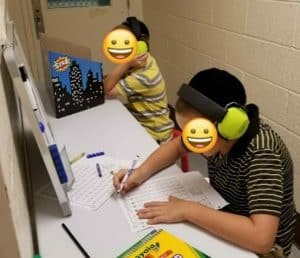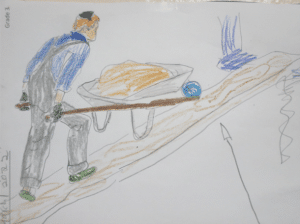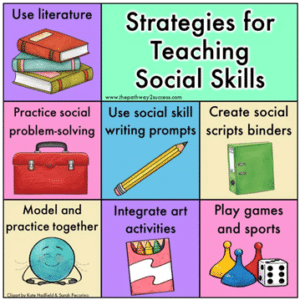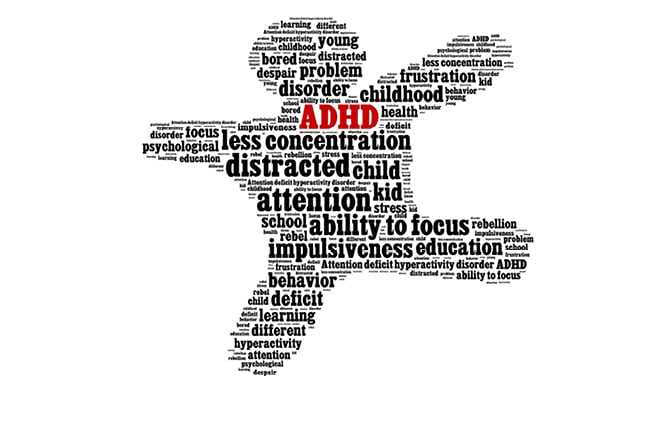
Teaching the Story of our אמונה
July 18, 2022
The Power of Song
July 18, 2022by Mrs. Etti Siegel
“My student has ADHD,” complain teachers to me as they struggle with classroom management. “I can’t teach when he is in the room!”
Is it Sammy, who constantly blurts out comments, talks to himself and others and often at the wrong times, either does not hand in work or hands in crumpled papers with barely legible work, and is always busy with various “stuff”?
Maybe it is Sarah, who, although she has no official diagnosis, just cannot seem to get to doing her work. She always asks to go out to the bathroom or to get a drink, needs (and gets) constant redirection, and still gets distracted minutes later! She is always busy talking to a classmate or passing a note and is in multiple fights throughout the day as she cannot seem to process or allow for other people’s perspectives.
Maybe it is Rivkah, who is constantly challenging her teacher’s authority. She does the opposite of what she is told, often won’t do the work assigned, gives in homework late (or never,) and resists doing any work that would require her to exert effort. She dampens any class initiative and sours the mood in the class.
Perhaps it is Danny, who is officially diagnosed with ADHD, loves to doodle on paper or on his desk or even on his hands, does almost no work, is never prepared with writing utensils or papers for class… and is charming and sweet until he has a meltdown in the middle of a lesson because the teacher took away one of his many distractions or because the schedule changed and he cannot deal with unpredictability?
So how does a teacher help a child with ADHD be successful- while trying to teach a class of children with their own diverse needs? When I meet with teachers to help them manage their classrooms, there are a few tips I give the teachers.
Acceptance
The first thing a teacher must do is accept the child. Children are quick to pick up on fakeness, so be authentic. When you are with the challenging student, find the positives and focus on them. A child with ADHD is often corrected and reprimanded, way more often than peers are. While research suggests that people thrive in positive environments with an 80/20 ratio of compliments to reprimands, the child with ADHD hears a lot of criticism. “Children who feel accepted, celebrated and secure are free to explore, thrive and be more cooperative” (Kutscher, 2014). Frederick Douglass said, “It is easier to build strong children than to repair broken men.”
Once the teacher can accept the child and realize the behavior is not personal, we can then move on to the practical ways the teacher can master classroom management, even with some atypical children. The biggest help for a struggling child is implementing best practices for all of the students in the classroom. Here is what I ask each teacher and what we work on.
Consistency and Clarity
Does your classroom have a consistent routine? Students with ADHD appreciate knowing what to expect so they do not have to try to figure out what is expected of them. Many children, especially those with ADHD, thrive on predictability. Write the schedule on the board each day. (It’s ok if you don’t get to something; compliment the class on what was accomplished and remind them that the untouched subject can be moved to another day.) If the routine is changed, point it out. Children with ADHD do better when warned ahead of the schedule change.
Children with ADHD also may not pick up on subtleties. For example, they may not understand that there are unwritten rules of the classroom. The expectations and consequences should be clear for the entire class, and sometimes, also gone over with the individual student. Ask yourself: are your instructions clear? Children struggling with ADHD often struggle with multi-step instructions. Giving only a few instructions, writing instructions on the board, having students repeat what needs to be done will benefit all students, not only those that struggle with short term memory.
Movement
Students with hyperactivity need to move. You may not relate to this, but it’s an impulsive need to move a lot. They fidget, squirm, and have difficulty staying seated. They often talk excessively, blurt out answers, and have trouble waiting for their turn. It’s a good idea to allow the student to move or fidget in a non-distracting manner. They might tap their foot in the air or rotate their pen back and forth in their hands. You could allow the students to do their work while standing, sitting on the floor, or moving between desks. Having them perform a heavy work activity like carrying a weighted backpack, taking books to the office is very helpful. Another good way to allow movement is to provide activity breaks. Depending on the student, these could include stretching, walking to the board to complete a task, or handing out assignments or materials.
I have used these ideas with my students. Teaching a certain seventh grade boys’ social studies class was a real challenge for me, especially at 5:20 PM! The arrangement I had with a few of the boys (each unbeknown to the other) helped me survive that year. One boy knew to raise his thumb to ask me to allow him to run up and down the steps to let off steam. He would come back in after a few minutes, sweaty and red-faced, and able to focus again. Another boy needed to stretch and get a drink – which he did as needed. These arrangements made class run smoothly for us all.
Mitigating Distraction
Can you provide a distraction-free way for a child to do work when necessary? Having children put up folders to make themselves a cubicle to work distraction-free can be helpful. (Figure 1) For certain students, noise cancelling headphones (but not listening to anything) work wonders. (Figure 2)


As we prepared this article, Rabbi Shimshon Gewirtz, (editor of this magazine but also a 10th grade rebbi,) confirmed the real need some students have for sensory-free learning spaces with the following story. “A boy with ADHD in my 10th grade Gemara shiur walked into the classroom closet and closed the door [and there are] no lights in there. I didn’t say anything, but just kept teaching. When shiur was over he came out and told me that he’d never been able to learn better!”
Mrs. Miriam Kohl, before becoming a principal, used to teach general studies to 5th grade boys. One boy was disturbed by the lights in the classroom but could tolerate the hallway lights. He would move his chair to the hallway, right outside the classroom, and learn from there.
Alternative Assessment
It’s likely that some of your ADHD students are learning much more than their grades indicate, if the assessment experience doesn’t work well for them. Is there an alternative method a child could use to show understanding of the material being taught?
A teacher in Bnos Malka Belz was teaching inclined planes to her third graders this year and once again, one of her students was not following along. The teacher decided enough was enough and whispered, “You can draw or write what the class is writing, but I need a way to see that you are paying attention and learning what needs to be learned today.” Her “notes” were fantastic! (See Figure 3)

Social Challenges
Children with ADHD often have social issues due to their impulsivity. They can miss social cues others find obvious. Help guide the ADHD child by offering guidance when they are in groups. Offer some recess prep before recess; many children will learn from those lessons. Students may have trouble controlling their emotions, and younger kids especially may have difficulty keeping their hands to themselves. They might not interpret social cues effectively. They could also struggle with conversational skills. These challenges often cause students with ADHD to have difficulty making and keeping friends.
Before recess every Monday, Miss Z quickly reviews the past social skill lessons, and then introduces a new social situation and how to handle it. Sometimes it is about snack sharing, the dos and don’ts, and the whys, or about being a good sport as opposed to a sore loser. She makes sure to remind the class before recess of her “Be a Mensch” lessons. She reinforces good behavior by noticing and commenting on the positive behavior. The 5-10 minutes lessons (figure 4) are well worth it, she reassures me, as so many fights are no longer occurring.

All of these strategies benefit the child who struggles in the mainstream classroom – but they also benefit all children in the classroom. I have seen classrooms with many of these strategies in place in an age-appropriate way and all the children, grades K-12, are benefiting from the accommodations and the care shown by the teacher. The teachers are still able to maintain discipline and there is no sacrifice in the learning, just students who feel that their teacher gets it. After all, doesn’t everyone struggle with focus on some days? Let’s give each other a little leeway.
References:
ADHD and Executive Functioning. Retrieved February 2022 from https://chadd.org/attention-article/adhd-and-executive-functioning/
Dawson, P., & Guare, R. (2018). Executive skills in children and adolescents: a practical guide to assessment and intervention. New York: The Guilford Press.
Diagnostic and statistical manual of mental disorders: DSM-5. (5th ed.). (2013). Washington, D.C.: American Psychiatric Association.
Mrs. Etti Siegel holds an MS in Teaching and Learning/Educational Leadership and brings sound teaching advice to her audiences culled from her over 30 years of teaching and administrative experience. Etti spent four years as an Adjunct Professor at Aspen University, three years at Concordia College of NY, and is now an Adjunct at the College of Mount Saint Vincent/Sara Schenirer. She is a coach and educational consultant for Catapult Learning and FACTS Education Solutions, is a sought-after mentor and workshop presenter around the country, and a popular presenter for Sayan (a teacher-mentoring program), Yachad/OU, Hidden Sparks, and the Consortium of Jewish Day Schools. She is a frequent contributor to The Journal of Jewish School Leadership and Hamechanech Magazine. She can be reached at [email protected].

